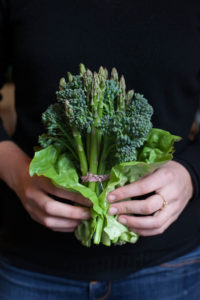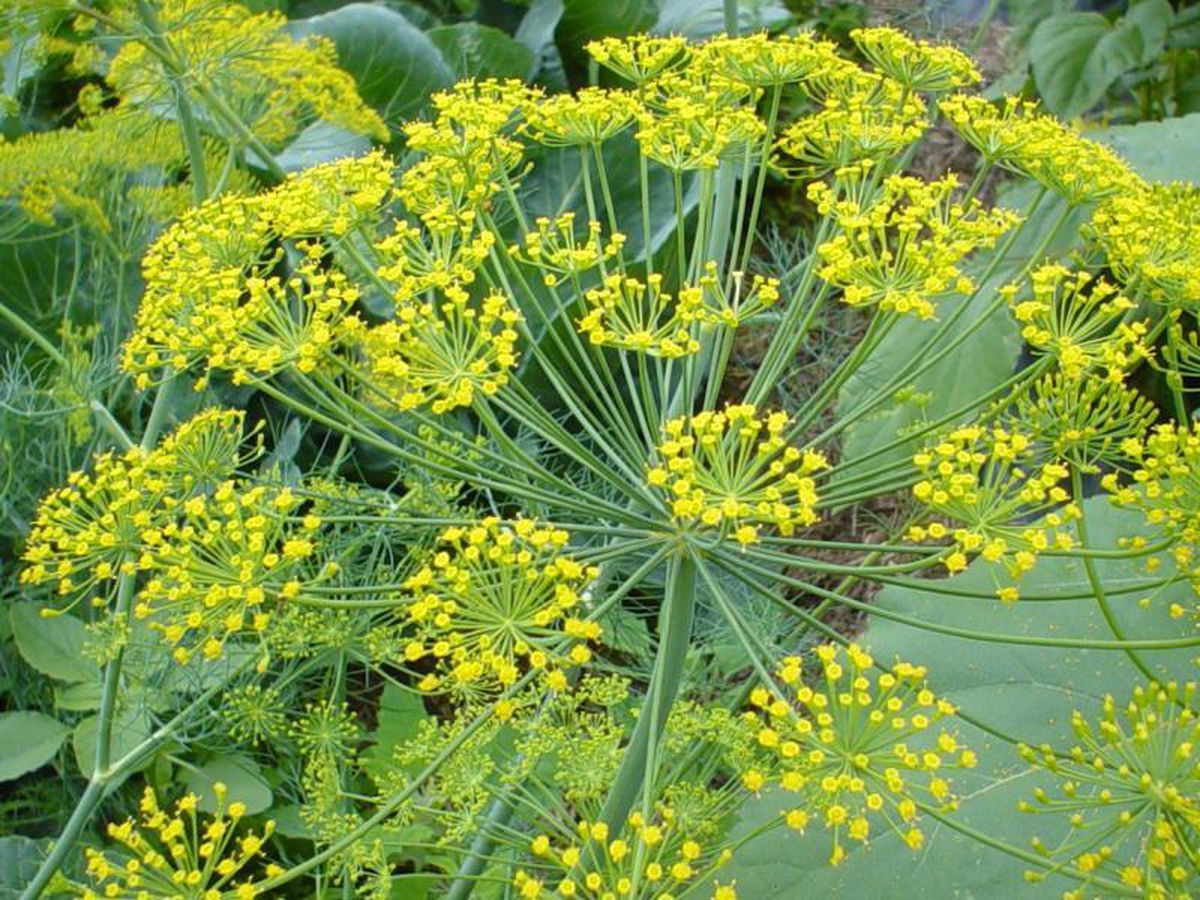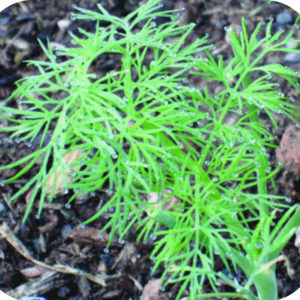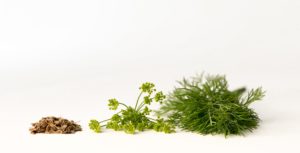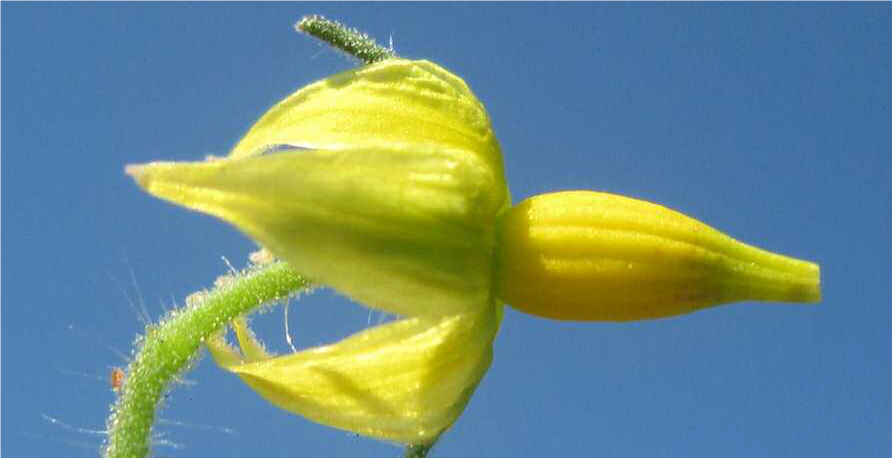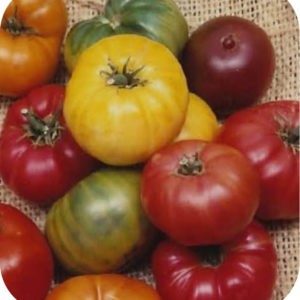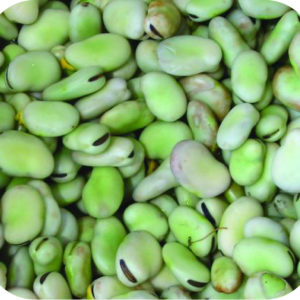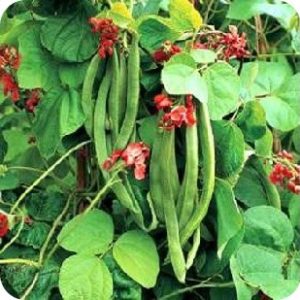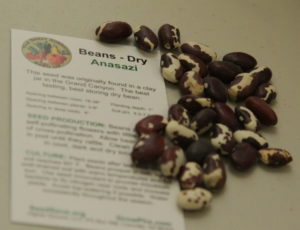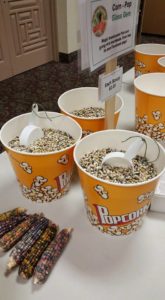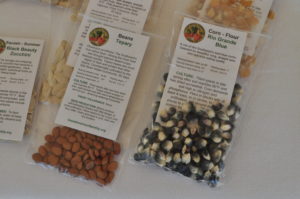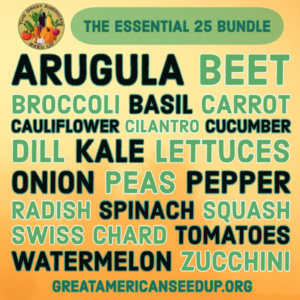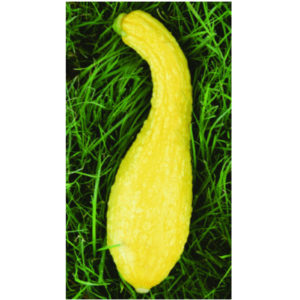10 New Year’s Resolution that Gardening Facilitates
As 2021 comes to a close, growers across North America are perusing seed catalogs and planning their spring gardens. Many are learning new gardening and seed saving techniques, and are excited to create more abundance in the new year.
For growers and seed savers preparing for 2022, we wanted to share some heartfelt encouragement in the midst of challenging times. There is something soothing and grounding about curling up in the winter with your favorite warm drink, seed catalogs open and soon to be dog-eared, pencil and planner in hand with visions of turning your gardening resolutions into tangible harvests.
Perhaps you are also making resolutions in other aspects of life, from improving your health to bettering your finances. Gardening can be an integral part of your goals. Here are a few common New Year’s resolutions and how growing food can help you to achieve them.
RESOLUTION 1: Manage Stress
Tending a garden provides the opportunity for peace and quiet. Performing repetitive tasks and immersing yourself in nature can be a form of meditation, a moment of calm to contemplate and unwind. Additionally, gardening can help you to clear your mind and improve your mood so that you can get more done in other areas of your life.
Many people resolve to lose weight and exercise more in the new year. Gardening chores can help. Bending, lifting, pushing, digging and squatting work every muscle in your body. Some chores are easy and relaxing, providing a light workout. Others are strenuous, combining both cardio and strength exercises.
RESOLUTION 3: Save Money
Growing your own food and putting some away for the off season can supplement your grocery budget. Having foods and herbs that you use often in the kitchen, such as basil, oregano, rosemary and, onions and garlic, save trips to the store and the associated costs (in the form of time, gasoline, expensive commercial produce and impulse purchases.)
Adding a garden to your list of responsibilities may seem to add complexity to your lifestyle. The opposite is true. As mentioned in the previous resolution, there is nothing more satisfying than having food at your fingertips. Food 20 feet from your kitchen saves trips to the store. Meal planning becomes uncomplicated as harvesting what’s in season or pulling preserved foods from the shelf or freezer becomes the default instead of hopping in the car to find something quickly.
RESOLUTION 5: Eat Better
Fresh produce picked directly from the garden is the healthiest and most delicious food you can eat. Newly harvested foods have more nutrients than produce that has been transported and stored at the market. And you can be assured that they are free of chemicals commonly used by commercial farm operations.
RESOLUTION 6: Break a Bad Habit
Letting go of a habit is really hard. Creating a new productive habit to replace the old habit is key. Gardening can become a new way of life that replaces or distracts from challenges you may have. Instead of picking up candy, pick some weeds out of your garden. When feeling logy from too much screen time, get some garden time by simply wandering outside and taking some deep breaths.
RESOLUTION 7: Spend More Time with Loved Ones
The garden is a great place to gather with friends and family, whether that means teaching your kids how to grow food or inviting neighbors over to dine on fresh foods al fresco. Having a garden buddy is fun and working together gets more done. As the saying goes: many hands make light work.
RESOLUTION 8: Go Green
Gardening is one of the most environmentally positive things you can do. Composting decreases waste and improves the soil. Fresh produce from your garden requires no plastic packaging, no fuel for transport and no agricultural chemicals. Most produce travels at least 900 miles to arrive at our favorite supermarket. The impact of transporting is reduced (greenhouse gasses). If everyone just grew one vegetable, harmful inputs (pesticides, herbicides, etc.) are reduced as well by simply not buying the produce in question.
RESOLUTION 9: Learn New Things
Gardening provides an endless opportunity to expand your knowledge and abilities. There is always a new technique or a different plant to try. And the experience of growing food makes you more and more skilled at cultivation. Your garden can become a source of pride and satisfaction.
If you want to learn more about seeds and chat with other seed savers, join us for Seed Up Saturday on February 26, 2022. Reserve your place at http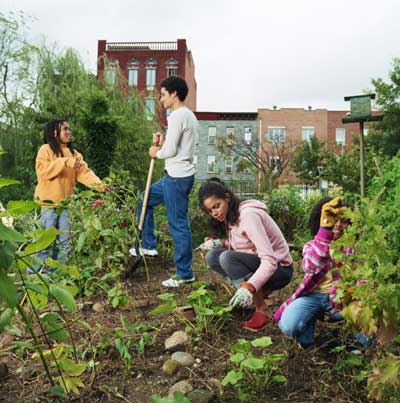 s://urbanfarm.lpages.co/seed-up-saturday/. You can also join free monthly virtual seed saving classes and Q&A at https://greatamericanseedup.org/events/seed-chat-2021-03/.
s://urbanfarm.lpages.co/seed-up-saturday/. You can also join free monthly virtual seed saving classes and Q&A at https://greatamericanseedup.org/events/seed-chat-2021-03/.
RESOLUTION 10: Give or Volunteer More
Helping out at a community garden or seed library, sharing produce, donating compost, teaching someone else are just a few of the ways that you can give back. Even something as simple as picking a flower bouquet for a friend uplifts both of you.
Generous heirloom, non-GMO seed bundles can be purchased at here.
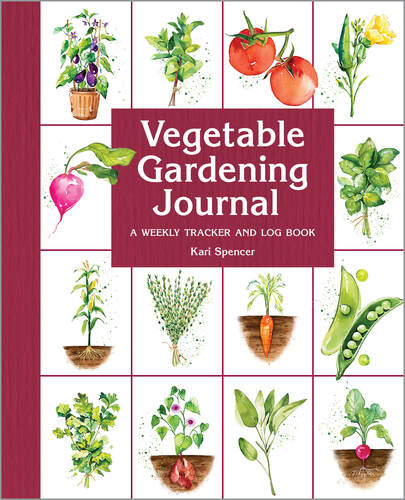 Need a planner? Get our beautiful and helpful Vegetable Gardening Journal here.
Need a planner? Get our beautiful and helpful Vegetable Gardening Journal here.
FROM ALL OF US AT GASU, we wish you a very Happy New Year and a bountiful 2022!

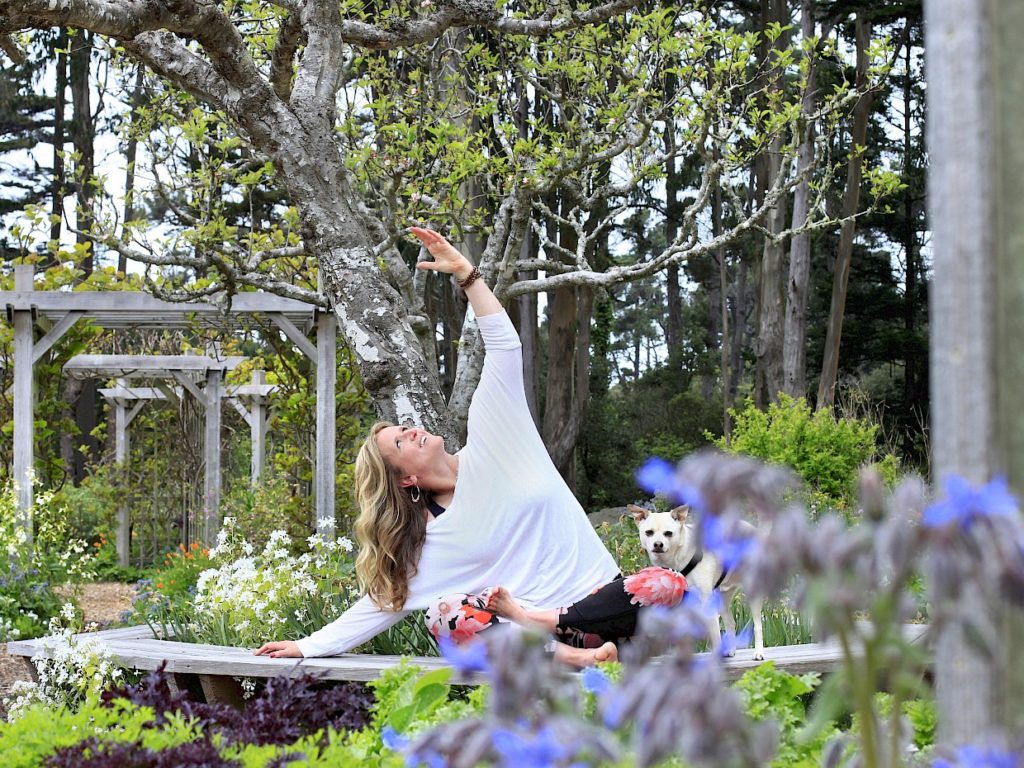



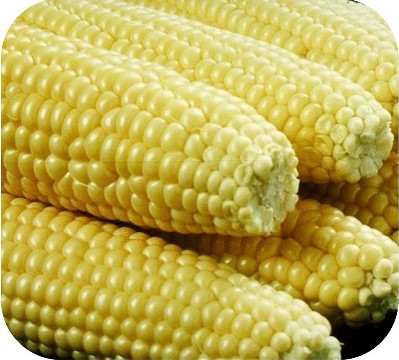
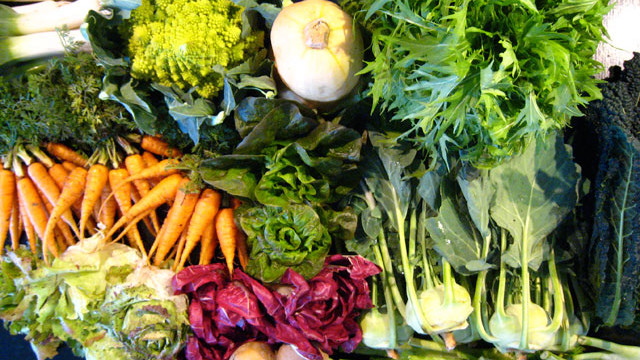




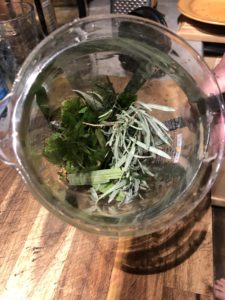 A typical evening libation might be a small handful of mint, a few leaves of lavender and a small sprig of rosemary. Bill pours slightly cooled boiling water over the leaves in a tea diffuser and lets it steep longer than a traditional tea (4 minutes). The longer the steep, the more flavor and more release of the essential oils and constituents. There is always immediate feedback of smell and flavor, and every evening another trial tisane is served.
A typical evening libation might be a small handful of mint, a few leaves of lavender and a small sprig of rosemary. Bill pours slightly cooled boiling water over the leaves in a tea diffuser and lets it steep longer than a traditional tea (4 minutes). The longer the steep, the more flavor and more release of the essential oils and constituents. There is always immediate feedback of smell and flavor, and every evening another trial tisane is served.

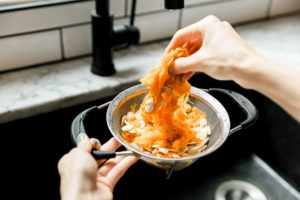
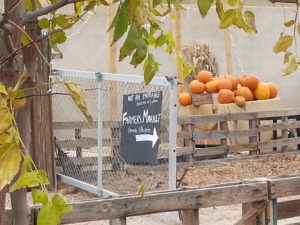
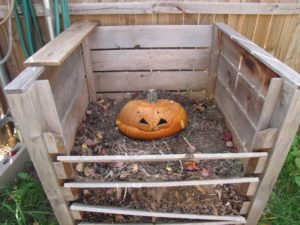
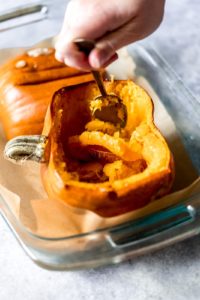 EAT THEM
EAT THEM

